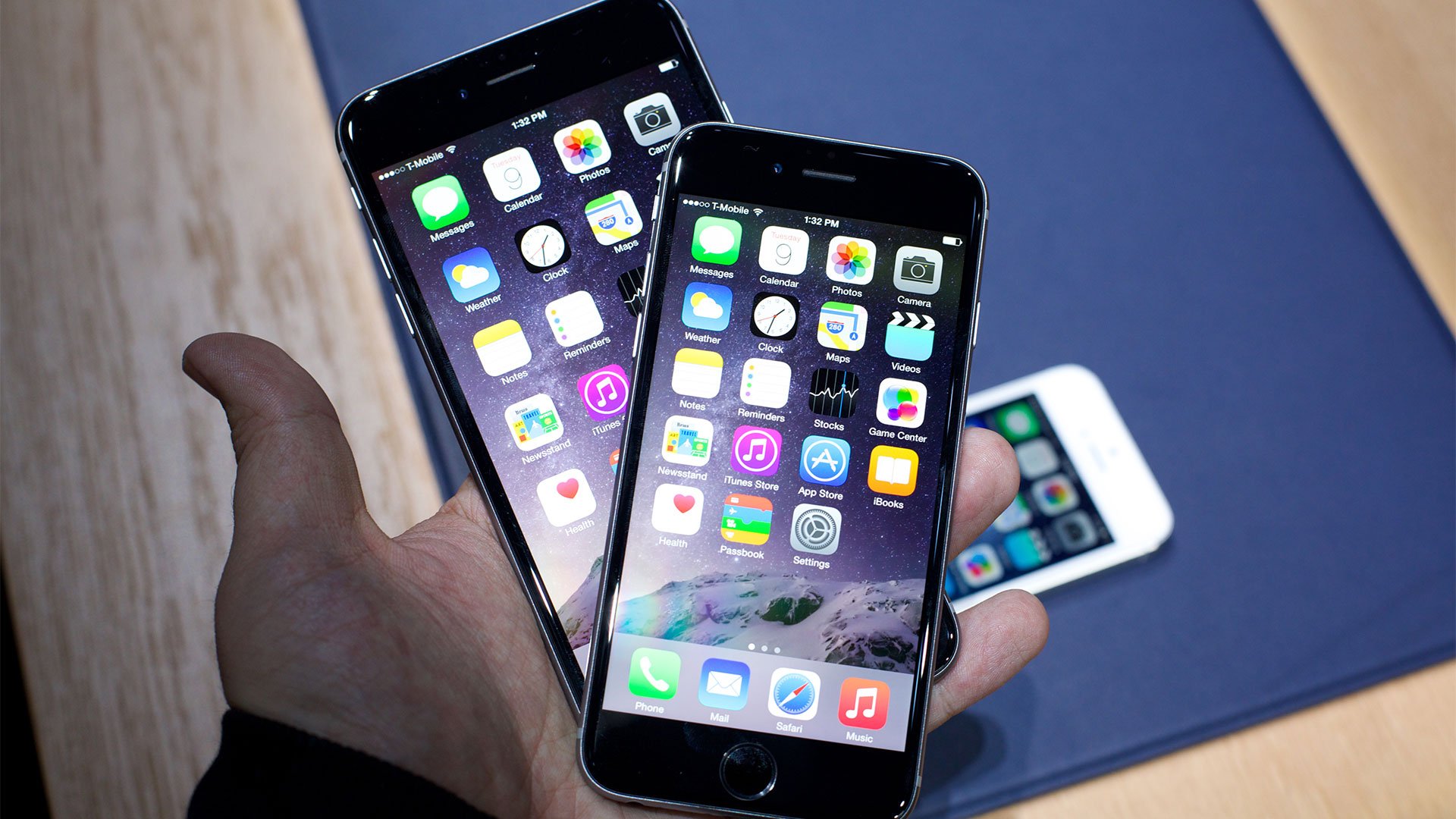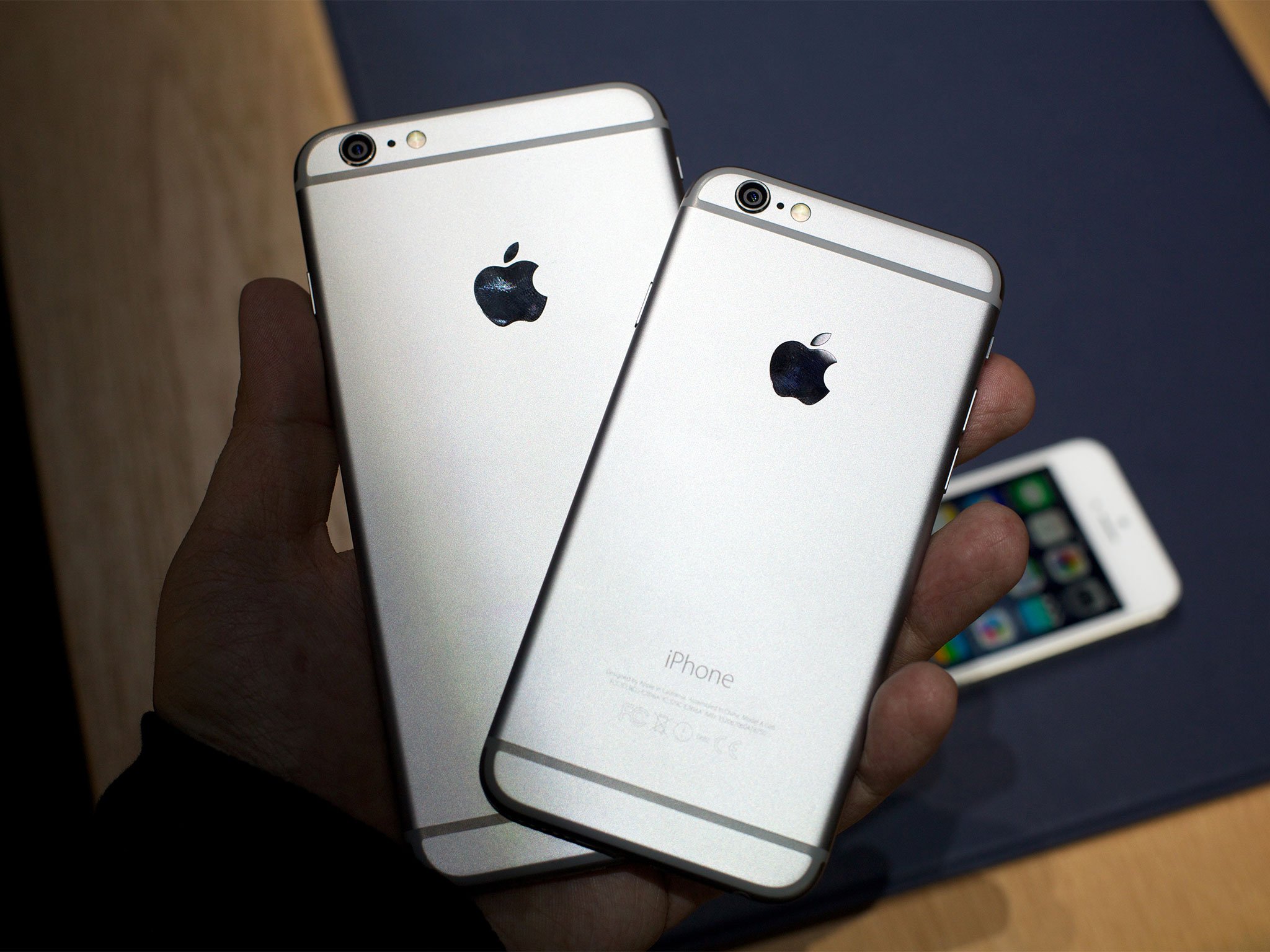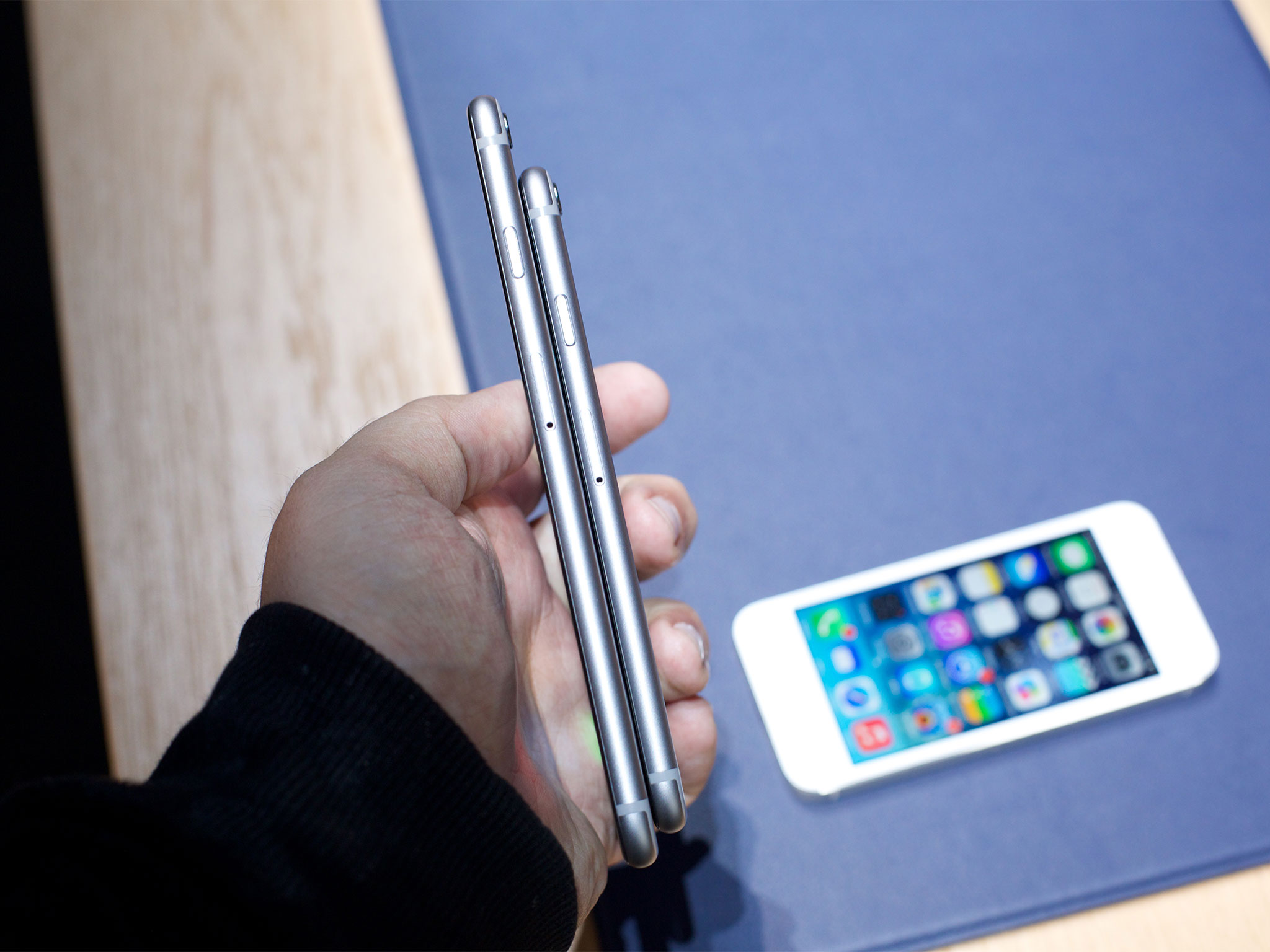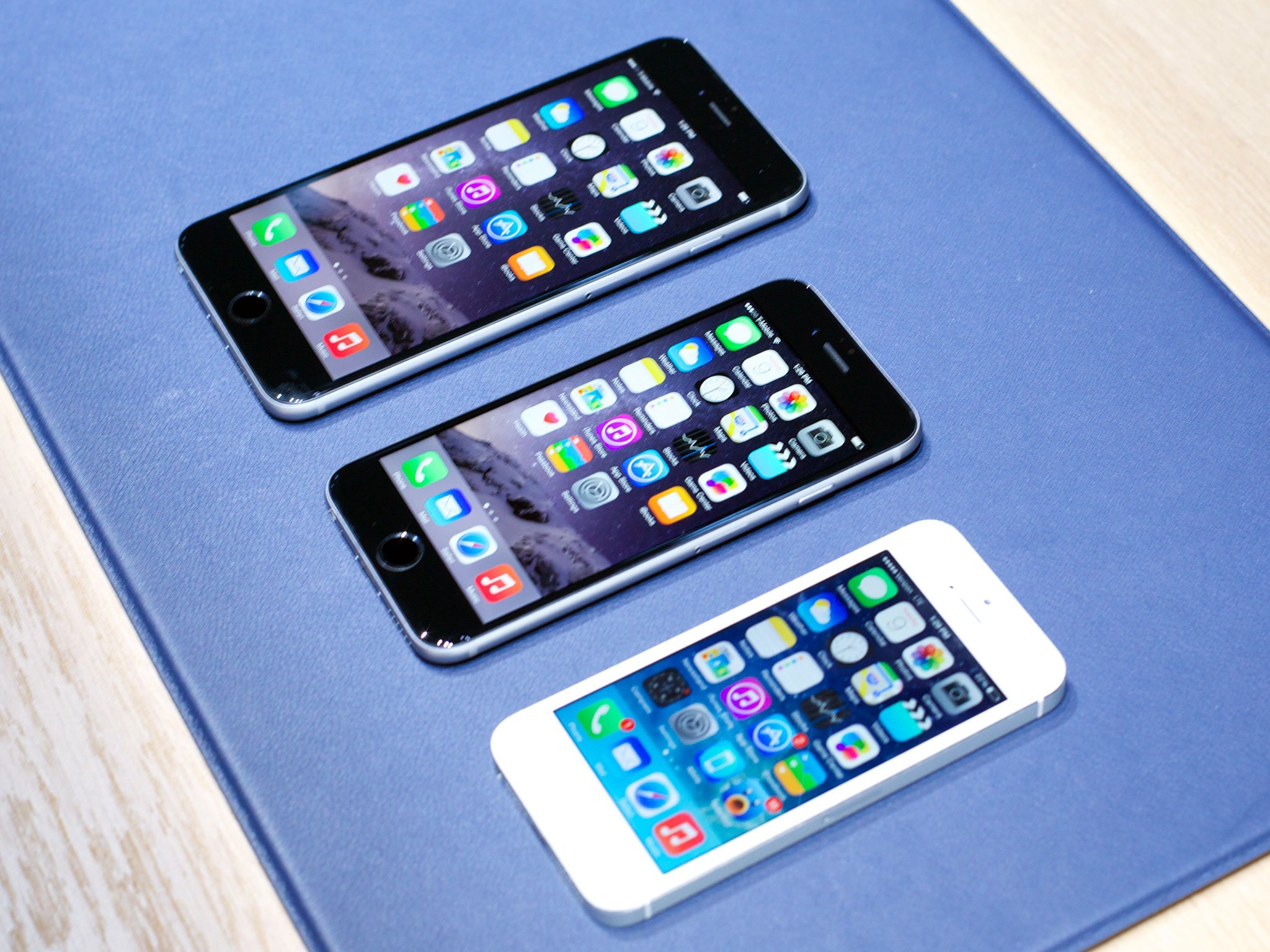Hands on with iPhone 6 and iPhone 6 Plus!

I spent as long as the very, very polite Apple staff at the iPhone 6 event would allow trying out both the new iPhone 6 and iPhone 6 Plus today. I tried them multiple times each and I tried multiple apps and as many new features as I could on both of them. So, how did they feel?
The iPhone 6 didn't really feel much bigger than an iPhone 5. It is, of course, 4.-7-inches to 4, and 1334x750 to 1136x640, but because it's so thin — which makes it so light — and so rounded, it was very similar to transition from two years ago. Almost unreal. I have no doubt that, just as I look back at the original iPhone as an iPhone mini now, the iPhone 6 will feel absolutely normal in a week or so.

The iPhone 6 Plus is another story. 5.5-inches with a 1920x1080p display at 401ppi, it definitely feels bigger. Not tablet big, but bigger. The reachability mode, where you double-touch the Touch ID sensor to literally pull the screen halfway down, making everything from the messages app icon to cancel buttons easier to reach is goofy to look at but really instinctive after only a few tries.
If more pixels aren't your thing, you can switch to Display Zoom mode and get the iPhone 5-sized screen scaled up to the iPhone 6 dimensions. Meaning, instead of seeing more stuff on the new iPhones, you get to see the same stuff as the old one, but bigger. That'll be great for accessibility.

Thanks to its bigger screen, the iPhone 6 Plus gets the added benefit of adaptive UI-powered, iPad style two column interfaces in landscape mode. So you basically have a big iPhone in portrait and a small iPad in landscape. That'll be a huge boon for productivity and I really like it.
Thanks to the larger size, the iPhone 6 Plus also gets optical image stabilization (OIS) for the iSight camera. Basically it "floats" the lens to eliminate hand shake so it can keep the aperture open longer and bring in more light. That leads to better photos in darker conditions. I didn't have a chance to try it out but the samples looked great.

Both iPhone 6 models have faster, powerful, more efficient Apple A8 processors and barometer-equipped Apple M8 motion coprocessors. Both have NFC and secure elements for credit card payments. Both have 802.11ac Wi-Fi and LTE Advanced cellular.
Master your iPhone in minutes
iMore offers spot-on advice and guidance from our team of experts, with decades of Apple device experience to lean on. Learn more with iMore!
iPhone 6 starts at $199, iPhone 6 Plus starts at $299. Sizes include 16GB, 64GB, and 128GB. Colors include gold, silver, and space gray. And they both ship on September 19.

The iPhone 6 would be an easy upgrade since it feels so much like an iPhone 5 or iPhone 5s. Within a few days I don't think I'd notice the difference anymore. The iPhone 6 Plus, however, might be an even more compelling one. What you sacrifice in pocket-ability and manipulability you make up for in productivity and low-light photography.
I think I'll make that sacrifice.
Check out the video up top and tell me — which one are you getting?

Rene Ritchie is one of the most respected Apple analysts in the business, reaching a combined audience of over 40 million readers a month. His YouTube channel, Vector, has over 90 thousand subscribers and 14 million views and his podcasts, including Debug, have been downloaded over 20 million times. He also regularly co-hosts MacBreak Weekly for the TWiT network and co-hosted CES Live! and Talk Mobile. Based in Montreal, Rene is a former director of product marketing, web developer, and graphic designer. He's authored several books and appeared on numerous television and radio segments to discuss Apple and the technology industry. When not working, he likes to cook, grapple, and spend time with his friends and family.
